This post contains both affiliate links and non-affiliate links.
We may receive a small commission if you click on a link and order through it. You may read our disclosure policy here.
The one thing everyone should grow in a food garden is…
HERBS!
Herbs are a very large collection of plants with culinary or medicinal uses…and sometimes both. They are incredibly versatile, with a range of flavor profiles to suit everyone. There are actually MANY reasons everyone should grow herbs, so let’s get into them!
Why grow herbs?
Nutrition and Flavor
Herbs add nutrition and flavor to your meals. At our most strapped-for-cash, herbs livened up cheap meals with wonderful flavor and a jolt of good-for-you vitamins. When money is tight, herbs and spices often go out the window as they are not exactly inexpensive. One ounce of fresh basil is over $3.00 (more or less, depending on where you live and what season it is). Grow your own basil and add it fresh to a plain canned tomato sauce you bought with a coupon and you’ve added a burst of flavor and Vitamins A and C, iron, calcium, and magnesium…to name a few. What’s not to love?
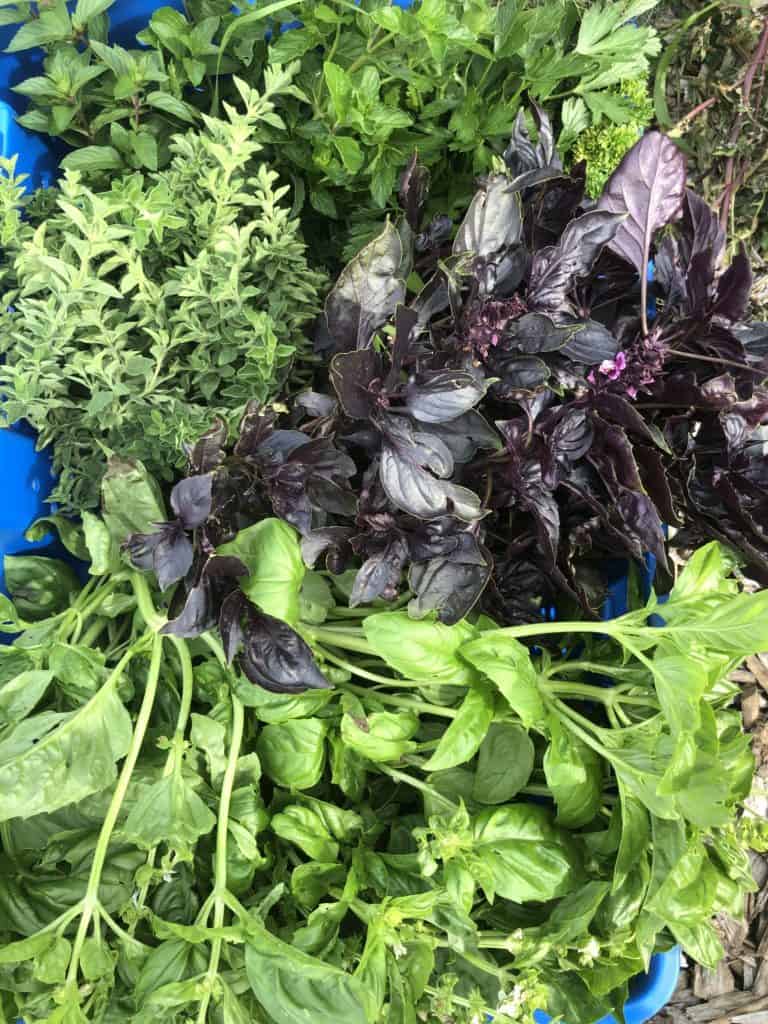
Color and Scent
Many herbs can add beauty to your garden as well as being useful. Imagine some purple basil or gorgeous lavender tucked into borders. You could add marigolds or calendula for the bright flowers, which also happen to be edible AND have medicinal properties. Mint and Chamomile for teas or in salads, smell wonderful and have pretty flowers. There are many varieties of Thyme that can line stepping stone pathways or drape from a container with a beautiful scent and small purple or white flowers.
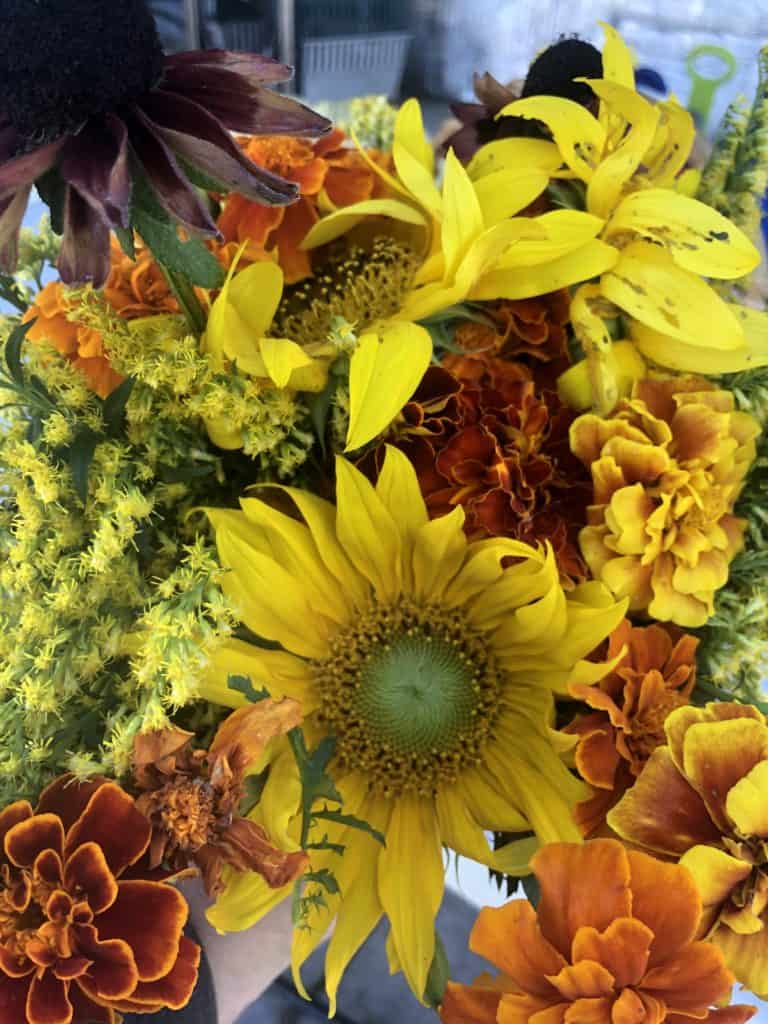
Themed Gardens
I love themed gardens. Set a theme and build your herbs around it.
Do you drink a lot of tea? Try a garden with chamomile, lavender, mint, and lemon balm. These are all fairly common and readily available. Three of them are perennials which means they can be a permanent planting and chamomile will re-seed itself very readily if you allow a few flowers to go to seed. Add a couple of raspberry plants, some strawberries, a potted mini lemon tree and yes, a tea bush and you have everything you need for some delicious tea blends.
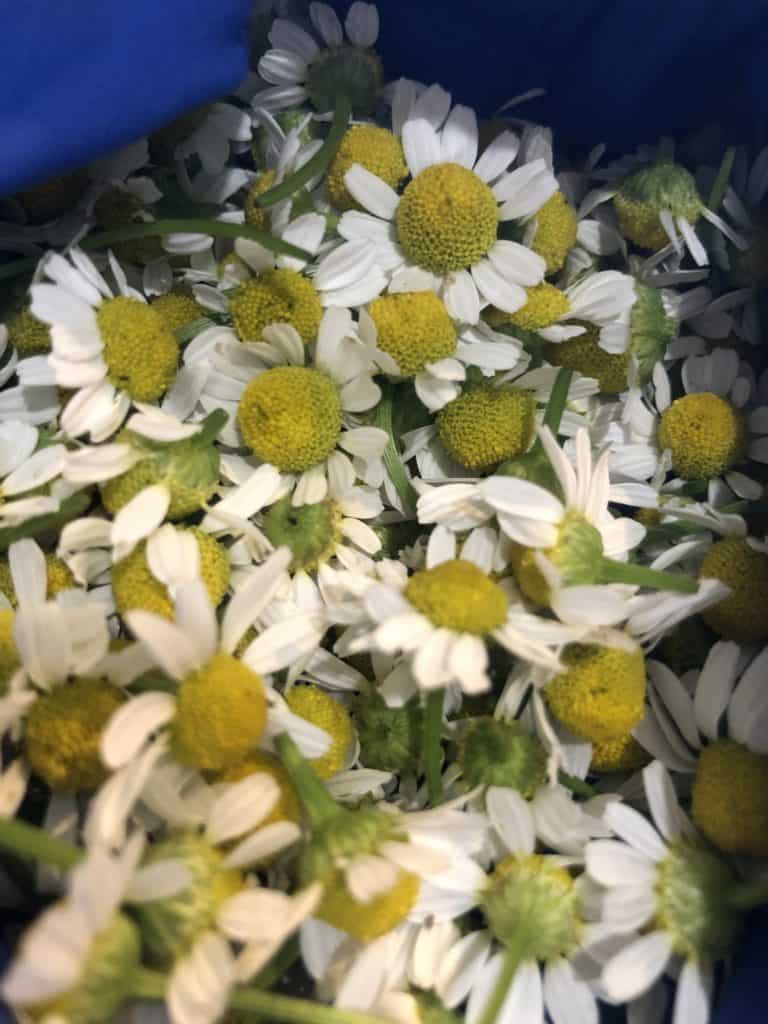
How about a Mexican bed? Think of fresh cilantro and basil. Try warm herbs like sage, perhaps garlic too. If you added some tomatoes, onions, and peppers and you are set.
French flavors more your style? Try tarragon, chives, chervil, and parsley which are delicate and delicious. For more robust flavors think oregano, marjoram, rosemary, thyme, and garlic. From these basics you can create some of my favorite blends and seasoning partnerships – add lavender and you can make your own Herbes de Provence! This is one of my most used herb areas.
FYI I grow all of the above, along with both Greek and Italian oregano, mint, Chinese (garlic) chives, Italian and Curly leaf parsley, and various mints, tea herbs, and medicinal herbs. I add more every year and have herb and spice blends almost predominantly made from our gardens. Start with some of your favorites and see how you go.
Advertisement

Our Culinary Herb Seeds Collection is comprised of 10 packets of our best-selling herb … [More]
Plant it and keep harvesting…for years
Many herbs are perennial…even this far north. Some of our chives have followed us for two moves and a different state to arrive in our current garden. Mints are quite notorious for being so hardy they take over garden spaces very quickly. This is great if you love mint, but not so great if you like pathways…or other plants.
Some perennials I grow, include oregano, lemon balm (same family as mint), various mints (chocolate, spearmint, ordinary, and peppermint), thyme (needs heavy mulching in our zone but so far so good), lovage (tastes like celery, great for soups and stews), echinacea, chives and tarragon. I just killed my rosemary but I had that for three years in a container.
This is a great list of 35 Perennial Herbs, just check to see if they will grow in your area.
Easy to grow
Of all the things I have grown over the years, I have rarely had issues with growing herbs from seed. Even with direct seeding in the garden, my cilantro ends up free seeding every year before I even get a chance to harvest my coriander (the seeds). See below. This patch was all “freebies” from the previous planting.
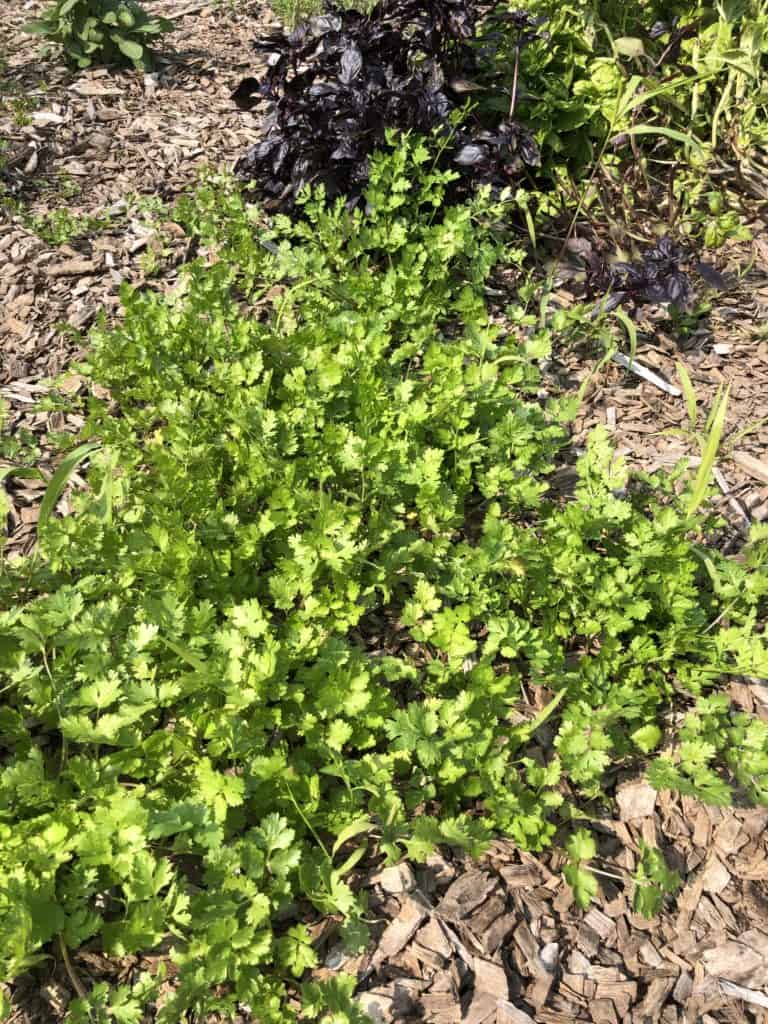
Interestingly enough, some herbs also grow wild, like dandelions and yarrow, ginseng, nettles, violets, mint, chives and garlic, just to name a few. Dandelions are probably the most easily recognizable wild herb. First, the leaves can be used in the spring for salads. Later, dandelion flowers can be added to oils and salves. Finally, dandelion roots can be harvested and used for teas and tinctures.
A short list of some wild herbs and edibles is available, at Mother Earth Living. With any wild-grown edibles, ensure it is in a safe and non-contaminated area. Wash the plants thoroughly and be positive on the ID of your bounty before partaking.

Grow anywhere…
We have grown herbs in containers, in pots in sunny windows, in raised beds, and in our herb garden, and this year (2021) we’ll be adding perennial herbs to our food forest…to grow “wild”. Annual herbs can be tucked in permanent beds to make use of space and gardens you already have. As most herbs like 6 hours of sun, you have lots of options for planting.
Some thrive in containers on patios – my mints and chives loved this and it was easier to look after my mints that way. If you keep them trimmed (used often) a container with annuals also works well.
Most herbs can handle part sun, and some, like my parsley, don’t mind part-shade. Basil likes some afternoon shade and my thyme doesn’t mind it either. Herbs are actually pretty flexible, which is great.
Herbs are Cost Effective
Yes, it’s cheaper to grow or forage for herbs yourself than buy them in stores. Herbs can be enjoyed fresh but can also be preserved in many ways. In the winter months, you can enjoy herbed salts, dried herbs, seasoning blends, herb cubes, and herbed butter from the freezer. I haven’t purchased a seasoning blend in years, I make them all from our own supplies or from bulk-purchased herbs.
Many of the annuals will self-seed and perennials, plant once and harvest for years, are wonderfully cost-effective.
I started growing herbs when we had very little money and found that they gave us a feeling of abundance, even in scarcity. It was a very affordable way to improve a portion of how we lived. I think the time in the dirt also helped reduce stress, but that is another story.
Starting herbs from seed:
I have written about starting seeds via Direct Seeding or there is also A Simple Seed Starting Indoors Guide, which may help get you started.
The herbs mentioned are just a sampling of what is available and are some of the more common and easily found herbs. If you are looking for more unusual herbs to start from seed, I have purchased some from Mountain Rose Herbs and Baker Creek Heirloom Seeds. I found both their service and selection to be pretty good.
If you grow nothing else this year, grow herbs, even if you buy transplants from a nursery, grow some, you won’t regret it.
I am redoing my backyard and have always wanted a garden. I never knew what kind, but this post made me think of having a themed garden for my tea. I absolutely love this idea. Thank you for writing this post, as it gave me true direction on where to go with my garden.
I think a tea garden is perfect. So many herbs for tea you can grow that are perennials too!
Thanks for your blog, nice to read. Do not stop.